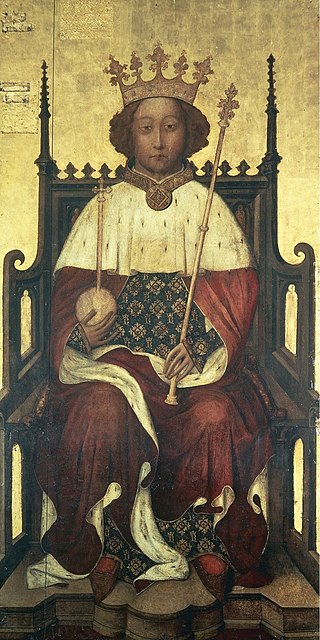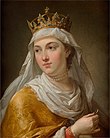Year 1389 (MCCCLXXXIX) was a common year starting on Friday of the Julian calendar.
The 1380s was a decade of the Julian Calendar which began on January 1, 1380, and ended on December 31, 1389.
The 1360s was a decade of the Julian Calendar which began on January 1, 1360, and ended on December 31, 1369.
Year 1400 (MCD) was a leap year starting on Thursday of the Julian calendar. The year 1400 was not a leap year in the Proleptic Gregorian calendar, it was a common year starting on Wednesday. The leap year began on a Thursday, and it ended on a Friday. The common year began on a Wednesday, and ended on a Wednesday, but the leap year ran from the Thursday to the Friday. The Wednesday at the beginning is January 1, the Wednesday at the end is December 31. It was the 1400th year of the Common Era and Anno Domini designations, the 400th year of the 2nd millennium, the 100th and last year of the 14th century, and the first year of the 1400s.
Year 1382 (MCCCLXXXII) was a common year starting on Wednesday of the Julian calendar.
The 1390s was a decade of the Julian Calendar which began on January 1, 1390, and ended on December 31, 1399.
The 1370s was a decade of the Julian Calendar which began on January 1, 1370, and ended on December 31, 1379.
Year 1377 (MCCCLXXVII) was a common year starting on Thursday of the Julian calendar.
Year 1381 (MCCCLXXXI) was a common year starting on Tuesday of the Julian calendar.
Year 1386 (MCCCLXXXVI) was a common year starting on Monday of the Julian calendar.
Year 1387 (MCCCLXXXVII) was a common year starting on Tuesday of the Julian calendar.
(MCCCXC) was a common year starting on Saturday of the Julian calendar.

Richard II, also known as Richard of Bordeaux, was King of England from 1377 until he was deposed in 1399. He was the son of Edward, Prince of Wales, and Joan, Countess of Kent. Richard's father died in 1376, leaving Richard as heir apparent to his grandfather, King Edward III; upon the latter's death, the 10-year-old Richard succeeded to the throne.

Henry IV, also known as Henry Bolingbroke, was King of England from 1399 to 1413. Henry was the son of John of Gaunt, Duke of Lancaster, and Blanche of Lancaster.

Mary de Bohun was the first wife of Henry Bolingbroke, Earl of Northampton and Hereford and the mother of King Henry V. Mary was never queen, as she died before her husband came to the throne as Henry IV.
John Holland, 1st Duke of Exeter, 1st Earl of Huntingdon, KG, of Dartington Hall in Devon, was a half-brother of King Richard II (1377–1399), to whom he remained strongly loyal. He is primarily remembered for being suspected of assisting in the downfall of King Richard's uncle Thomas of Woodstock, 1st Duke of Gloucester (1355–1397) and then for conspiring against King Richard's first cousin and eventual deposer, Henry Bolingbroke, later King Henry IV (1399–1413).
Events from the 1390s in England.
Joan FitzAlan, Countess of Hereford, Countess of Essex and Countess of Northampton was the wife of the 7th Earl of Hereford, 6th Earl of Essex and 2nd Earl of Northampton. She was the mother of Mary de Bohun, the first wife of Henry of Bolingbroke who later reigned as King Henry IV, and Eleanor de Bohun, Duchess of Gloucester. She was the maternal grandmother of King Henry V.





